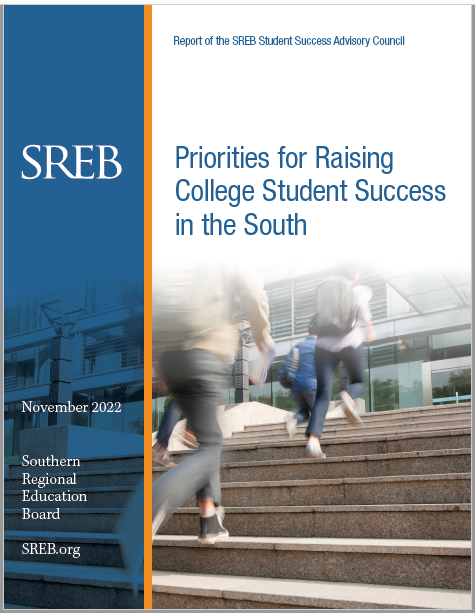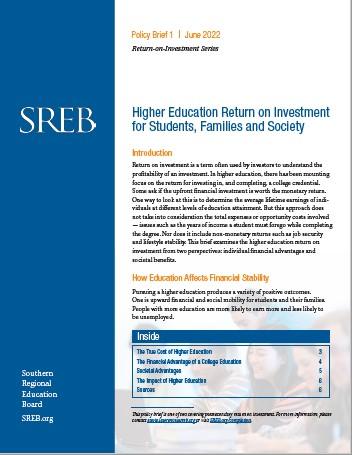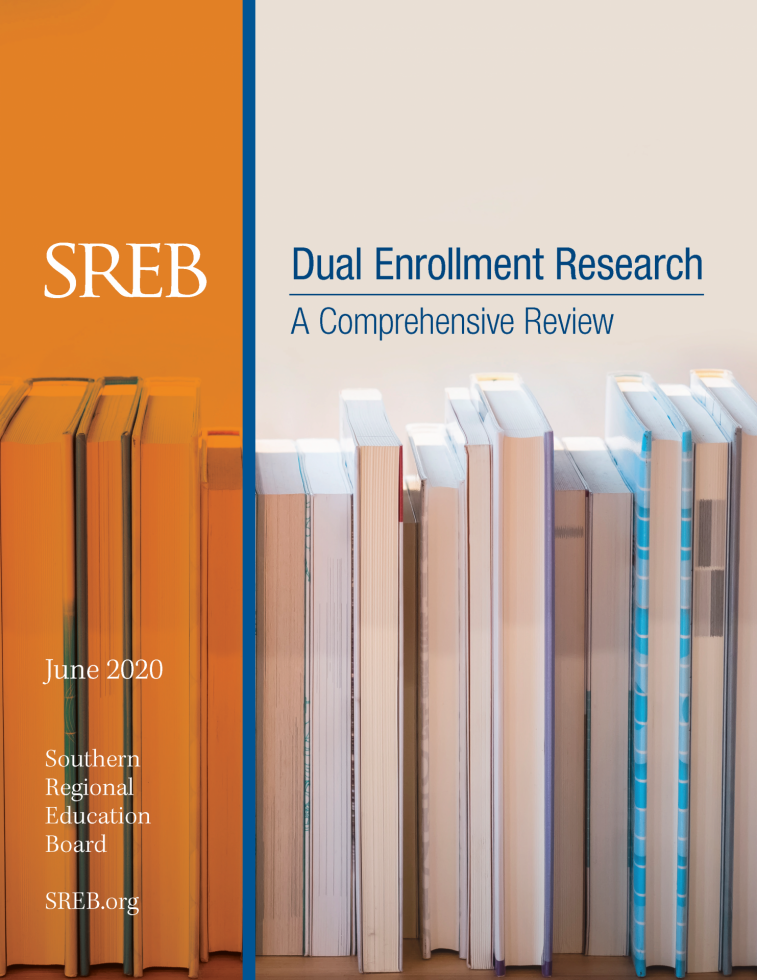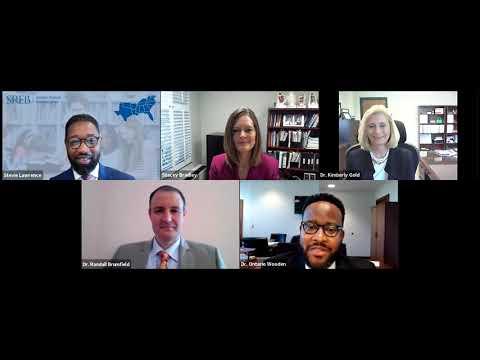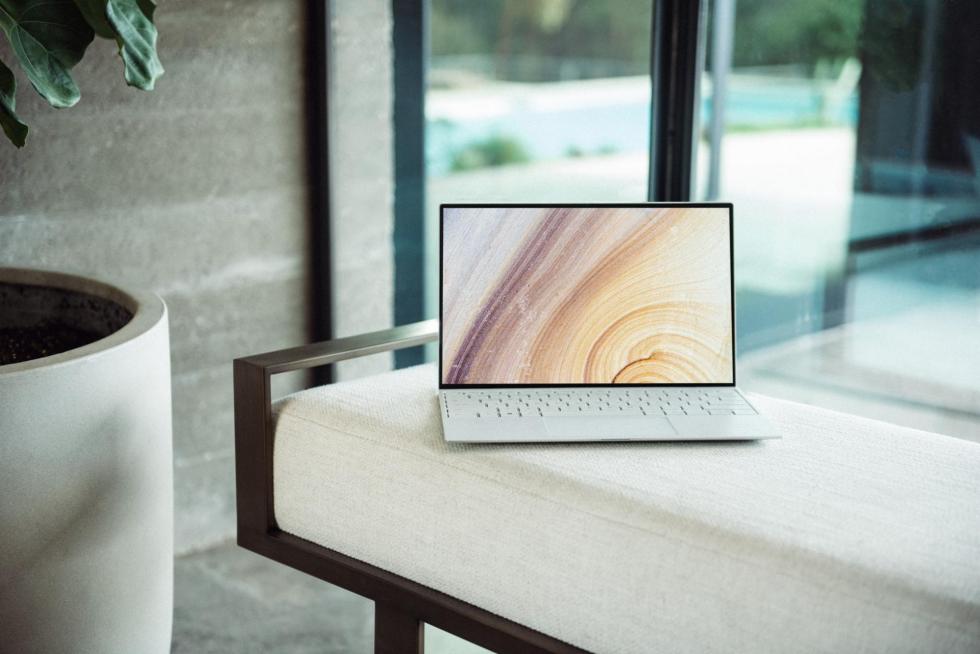Topic: Postsecondary Success and College Completion
Postsecondary Student Success
Creating jobs is a top priority in Southern states, and a better-educated workforce is an important strategy. Helping states with policy and practice to improve postsecondary student success is central to SREB’s mission.
Student success = increasing access and completion for postsecondary credentials that lead to successful careers and stronger economies
College Costs Are High — But Here’s the Progress We’re Seeing
College is expensive — there’s no denying that. And if you’ve followed conversations about college affordability, you’ve probably heard a lot about how discouragingly high the cost of attending college can be. I don’t disagree, and the data we analyzed definitely backed that up.
But here’s the thing: as I dug into the numbers, I didn’t just feel the usual frustration over rising costs — I actually felt a bit hopeful. Surprising, right? So, what stood out to me?
Priorities for Raising College Student Success in the South
Report of the SREB Student Success Advisory Council
The report of SREB’s Student Success Advisory Council offers 10
recommendations to improve the success of students in
postsecondary education, particularly those from demographic
groups that have been underrepresented in higher education
historically. After examining the challenges of affording
college, navigating and persisting to graduation, and beginning a
career, the report outlines specific ideas for both states and
postsecondary institutions.
DOWNLOAD PDF
New SREB college affordability profiles show progress
Affordability Gaps Persist For Lower-income Families
The South has seen mixed progress in college affordability, with some improvements in overall metrics but persistent challenges for lower-income students, according to data in the new Southern Regional Education Board College Affordability Profiles.
Recognizing that affordability is a critical factor in both access to and completion of postsecondary education, SREB publishes the reports to help policymakers evaluate and improve affordability in their states.
Find your state’s report:
SREB Convenes Advisory Board for New Faculty Development Center
The Southern Regional Education Board has named leaders from a diverse group of colleges to an advisory committee for a new Center for Innovative Faculty Development.
Priorities for Raising College Student Success in the South
View the recording >
College student success is central to both the professional workforce and the prosperity of individuals today and tomorrow. Join members of SREB’s Student Success Advisory Council as they discuss strategies with the best potential to impact individual and collective postsecondary success.
Higher Education Return on Investment for Students, Families and Society
With mounting focus on the return on investing in a college degree, this brief shows how the benefits outweigh the costs to individuals, communities and society. A postsecondary credential remains a profitable investment for individuals, who in general earn more and are less likely to be unemployed, as well as for economies that need a highly skilled workforce and residents who contribute to society.
Dual Enrollment Research
A Comprehensive Review
Part of the ongoing work of SREB’s Dual Enrollment Initiative, this comprehensive review is intended to help policymakers better understand what the research tells us (and what it doesn’t) about dual enrollment. The research analyzes more than 500 journal articles, master’s theses, doctoral dissertations, web documents and books from 1959 to 2019.
Workforce-Driven Financial Aid: Policies and Strategies
Essential Elements of State Policy For College Completion
The rapidly evolving workplace has created a shortage of skilled and educated workers in many fields, leaving essential jobs unfilled and millions of adults unqualified for them. This policy brief summarizes statewide strategies to support financial assistance for students in programs designed to address workforce needs. It includes suggestions for states that are evaluating, or considering creating, workforce-driven financial aid policies.
The Cost of Completing College
Promising Strategies to Support Student Success
View the webinar recording
Many students persevered despite pandemic hurdles to starting or staying in college. This webinar shared strategies that hold promise for the longer-term to increase support for the students who need it most.
Postsecondary Attainment Goals
in SREB States
| State | 2019 Attainment Level |
Goal | By |
|---|---|---|---|
| Alabama | 45.1% | Add 500,000 high-skilled employees | 2025 |
| Arkansas | 43.6% | 60% | 2025 |
| Delaware | 47.9% | none | none |
| Florida | 52.8% | 55% | 2025 |
| Georgia | 52.8% | 60% | 2025 |
| Kentucky | 49.4% | 60% | 2030 |
| Louisiana | 48.1% | 60% | 2030 |
| Maryland | 55.9% | 55% | 2025 |
| Mississippi | 44.4% | Reach the national attainment level average | 2025 |
| North Carolina | 52.1% | Ensure that 2 million, age 25 to 44, have earned a postsecondary degree or credential | 2030 |
| Oklahoma | 46.5% | 70% | 2025 |
| South Carolina | 47.6% | 60% | 2025 |
| Tennessee | 46.8% | 55% | 2025 |
| Texas | 47.9% | 60% of adults ages 25-34 | 2030 |
| Virginia | 57.4% | 70% | 2030 |
| West Virginia | 42.6% | 60% | 2030 |
Community Colleges in the South: Strengthening Readiness and Pathways
Report of the SREB Commission on Community Colleges
The full report of SREB’s Community College Commission offers 21 recommendations for states and community colleges. It presents findings on readiness, placement, math standards and structurally guided pathways to help students clearly see entry, exit and re-entry points to continue their education. Recommendations ask states to commit increased funding and hold colleges accountable for improving student services and completion. The goal: increase college access and success so more students earn postsecondary credentials and enter careers in demand in their communities.




